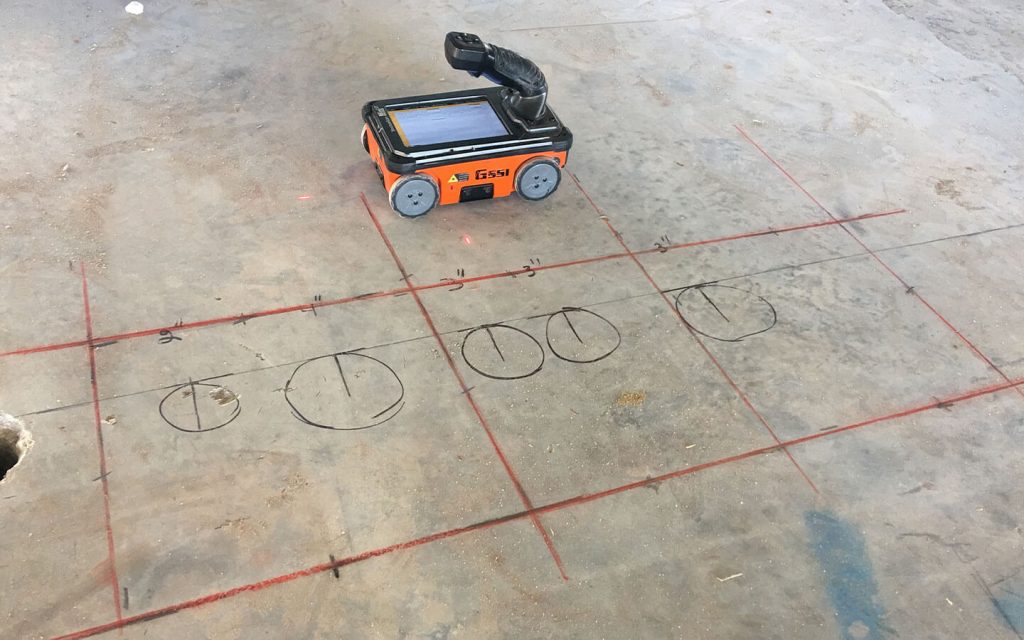Past the Surface Area: Leveraging Advanced Concrete Scanning Techniques for Unmatched Accuracy and Insight
Advanced concrete scanning strategies have emerged as crucial devices in this quest, using a glimpse under the surface to reveal a globe of essential insights. By using cutting-edge innovations, specialists can reveal anomalies, evaluate the problem of concrete frameworks, and make educated decisions that shape the program of tasks.
Importance of Advanced Concrete Scanning
The importance of using innovative concrete scanning techniques depends on the unmatched precision they provide for identifying sub-surface anomalies and guaranteeing structural stability. By using advanced modern technologies such as ground-penetrating radar (GPR), electromagnetic induction, and advanced sonar imaging, building and construction experts can delve underneath the surface of concrete frameworks with a degree of accuracy that far goes beyond conventional inspection methods. Concrete Scanning. These methods allow the identification of covert dangers like rebar deterioration, voids, conduits, or post-tension cords that could jeopardize the security and safety of a structure gradually
Moreover, advanced concrete scanning gives invaluable understandings into the total problem of a concrete aspect without the need for intrusive procedures, lessening the risk of causing damages throughout the assessment procedure. The capability to pinpoint the specific place and depth of possible problems allows for targeted repairs and upkeep, eventually lengthening the life-span of the structure and maximizing its efficiency. Fundamentally, the importance of sophisticated concrete scanning can not be overstated in the world of building and infrastructure upkeep, where precision and reliability are extremely important.
Sorts Of Cutting-Edge Technologies

Abnormalities and Problem Detection

In addition to GPR, concrete scanning methods like thermography and impact-echo screening are additionally reliable in discovering flaws and abnormalities. By leveraging these innovative strategies, experts can proactively address architectural problems, guaranteeing the longevity and safety and security of concrete structures.
Assessing Concrete Condition
Exactly how can designers accurately examine the problem of concrete structures to guarantee their long life and safety? Different innovative concrete scanning techniques are utilized for this function. Ground-penetrating radar (GPR) is commonly utilized to examine the interior structure of concrete, finding spaces, fractures, and various other abnormalities that may endanger its stamina.
Moreover, visual inspection continues to be a fundamental component of concrete problem analysis. Designers aesthetically take a look at the surface area for signs of deterioration, such as spalling, splitting, or staining. Incorporating non-destructive testing techniques visite site with visual evaluations permits a thorough examination of concrete problem, enabling engineers to recognize possible problems at an early stage and implement prompt upkeep or repair services. By leveraging these sophisticated methods, engineers can make certain the long-term longevity and security of concrete frameworks.
Enhancing Decision-Making Procedures
In the realm of facilities management, maximizing decision-making processes is essential for making certain the efficient maintenance and long life of concrete structures. Boosted decision-making procedures helpful resources in concrete monitoring involve utilizing innovative scanning techniques to collect in-depth information on the condition of frameworks. By leveraging innovations such as ground-penetrating radar and 3D imaging, stakeholders can make informed decisions regarding replacement, repair work, or support techniques.
These progressed scanning methods give important insights right into the internal composition of concrete, identifying potential issues such as gaps, splits, or corrosion that may not show up externally. This degree of comprehensive details permits proactive maintenance preparation, reducing the danger of architectural failings and enhancing the overall lifespan of concrete structures.
Furthermore, by integrating electronic paperwork and analysis devices right into the decision-making procedure, stakeholders can track the evolution of concrete problems over time, making it possible for predictive upkeep strategies and enhancing source allowance. Ultimately, the assimilation of sophisticated concrete scanning techniques enhances decision-making processes by supplying unparalleled precision, understanding, and efficiency in framework management.
Conclusion
To conclude, advanced concrete scanning strategies provide unparalleled precision and understanding in spotting anomalies, flaws, and analyzing the condition of concrete structures. By leveraging cutting-edge modern technologies, decision-making processes can be enhanced, resulting in even more reliable and informed services for keeping and fixing concrete infrastructure. These strategies play a vital function in guaranteeing the safety and durability of concrete frameworks, making them an essential device in the field of building and engineering.
In addition, progressed concrete scanning offers important insights into the general problem of a concrete component without the requirement for invasive steps, minimizing the danger of creating damage throughout the analysis process - Concrete Scanning. An additional ingenious technology is 3D X-ray scanning, which offers thorough images of the interior structure of concrete, using important details without the requirement for damaging screening. Additionally, Concrete Cover Meters are made use of to gauge the density of concrete cover over reinforcement bars accurately. Improved decision-making processes in concrete monitoring involve making use of linked here sophisticated scanning techniques to collect detailed information on the condition of frameworks.In final thought, advanced concrete scanning methods use unequaled precision and insight in detecting abnormalities, flaws, and evaluating the problem of concrete structures
Comments on “Expert Tips for Ideal Concrete Scanning Outcomes”